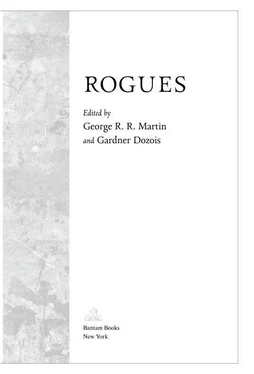Once his mourning had run its course, the king moved swiftly to resolve the long-simmering issue of the succession. Disregarding the precedents set by King Jaehaerys in 92 and the Great Council in 101, King Viserys I declared his daughter Rhaenyra to be his rightful heir, and named her Princess of Dragonstone. In a lavish ceremony at King’s Landing, hundreds of lords did obeisance to Rhaenyra as she sat at her father’s feet at the base of the Iron Throne, swearing to honor and defend her right of succession.
Prince Daemon was not amongst them, however. Furious at the king’s decree, the prince quit King’s Landing, resigning from the City Watch. He went first to Dragonstone, taking his paramour Mysaria with him upon the back of his dragon Caraxes, the lean red beast the smallfolk called the Blood Wyrm. There he remained for half a year, during which time he got Mysaria with child.
When he learned that his concubine was pregnant, Prince Daemon presented her with a dragon’s egg, but in this he went too far. King Viserys commanded him to return the egg and return to his lawful wife or else be attainted as a traitor. The prince obeyed, though with ill grace, dispatching Mysaria (eggless) back to Lys, whilst he himself flew to Runestone in the Vale and the unwelcome company of his “bronze bitch.” But Mysaria lost her child during a storm on the narrow sea. When word reached Prince Daemon he spoke no word of grief, but his heart hardened against the king his brother. Thereafter he spoke of King Viserys only with disdain and began to brood day and night on the succession.
Though Princess Rhaenyra had been proclaimed her father’s successor, there were many in the realm who still hoped that Viserys might father a male heir, for the Young King was not yet thirty. Grand Maester Runciter was the first to urge His Grace to remarry, even suggesting a suitable choice: the Lady Laena Velaryon, who had just turned twelve. A fiery young maiden, freshly flowered, Lady Laena had inherited the beauty of a true Targaryen from her mother Rhaenys and a bold, adventurous spirit from her father the Sea Snake. As he had loved to sail, Laena loved to fly, and had claimed for her own no less a mount than mighty Vhagar, the oldest and largest of the Targaryen dragons since the passing of the Black Dread in 94 AC. By taking the girl to wife, the king could heal the rift that had grown up between the Iron Throne and Driftmark, Runciter pointed out. And Laena would surely make a splendid queen.
Viserys I Targaryen was not the strongest-willed of kings, it must be said; always amiable and anxious to please, he relied greatly on the counsel of the men around him and did as they bid more oft than not. In this instance, however, His Grace had his own notion, and no amount of argument would sway him from his course. He would marry again, yes … but not to a twelve-year-old girl, and not for reasons of state. Another woman had caught his eye. He announced his intention to wed Lady Alicent of House Hightower, the clever and lovely eighteen-year-old daughter of the King’s Hand, the girl who had read to King Jaehaerys as he lay dying.
The Hightowers of Oldtown were an ancient and noble family, of impeccable lineage; there could be no possible objection to the king’s choice of bride. Even so, there were those who murmured that the Hand had risen above himself, that he had brought his daughter to court with this in mind. A few cast doubt on Lady Alicent’s virtue, suggesting she had given her maidenhead to Prince Daemon and later welcomed King Viserys into her bed as well, even before Queen Aemma’s death. In the Vale, Prince Daemon reportedly whipped the serving man who brought the news to him within an inch of his life. Nor was the Sea Snake pleased. House Velaryon had been passed over once again, his daughter Laena scorned just as his son Laenor had been scorned by the Great Council in 101, and his wife by the Old King back in 92 AC. (Lady Laena herself seemed untroubled. “Her ladyship shows far more interest in flying than in boys,” her maester observed).
When King Viserys took Alicent Hightower to wife in 106 AC, House Velaryon was notable for its absence. Princess Rhaenyra poured for her stepmother at the feast, and Queen Alicent kissed her and named her “daughter.” The princess was amongst the women who disrobed the king and delivered him to the bedchamber of his bride. Laughter and love ruled the Red Keep that night … whilst across Blackwater Bay, Lord Corlys the Sea Snake welcomed the king’s brother Prince Daemon to a war council. The prince had suffered all he could stand of the Vale of Arryn, Runestone, and his lady wife. “Dark Sister was made for nobler tasks than slaughtering sheep,” he is reported to have told the Lord of the Tides. “She has a thirst for blood.” But it was not rebellion that the rogue prince had in mind; he saw another path to power.
The Stepstones, the chain of rocky islands between Dorne and the Disputed Lands of Essos, had long been a haunt of outlaws, exiles, wreckers, and pirates. In themselves the isles were of little worth, but placed as they were, they controlled the sea-lanes to and from the narrow sea, and merchant ships passing through those waters were oft made the prey of their inhabitants. Still, for centuries such depredations had remained no more than a nuisance.
Ten years earlier, however, the Free Cities of Lys, Myr, and Tyrosh had put aside their ancient enmities to make common cause in a war against Volantis. After defeating the Volantenes, the three victorious cities had entered into an “eternal alliance” and formed a strong new power: the Triarchy, better known in Westeros as the Kingdom of the Three Daughters, or, more rudely, the Three Whores (this “kingdom” was without a king, being governed by a council of thirty-three magisters). Once Volantis withdrew from the Disputed Lands, the Three Daughters had turned their gaze westward. Their armies swept over the Stepstones under the command of the Myrish prince-admiral, Craghas Drahar, who earned the sobriquet Craghas Crabfeeder by staking out hundreds of pirates on the wet sands, to drown beneath the rising tide.
The annexation of the Stepstones by the Triarchy at first met with approval from the lords of Westeros. Order had replaced chaos, and if the Three Daughters demanded a toll of any ship passing through their waters, that seemed a small price to pay.
The avarice of Craghas Crabfeeder and his partners in conquest soon turned feelings against them, however; the toll was raised again, and yet again, soon becoming so ruinous that merchants who had once paid gladly now sought to slip past the galleys of the Triarchy as once they had the pirates. Drahar and his Lysene and Tyroshi coadmirals seemed to be vying with each other to see who could demonstrate the greatest avarice. The Lyseni became especially loathed, for they claimed more than coin from passing ships, taking off women, girls, and comely young boys to serve in their pleasure gardens and pillow houses. (Amongst those thus enslaved was Lady Johanna Swann, a fifteen-year-old niece of the Lord of Stonehelm. When her infamously niggardly uncle refused to pay the ransom, she was sold to a pillow house, where she rose to become the celebrated courtesan known as the Black Swan, and ruler of Lys in all but name. Alas, her tale, however fascinating, has no bearing upon our present history).
Of all the lords of Westeros, none suffered so much from these practices as Corlys Velaryon, Lord of the Tides, whose fleets had made him as wealthy and powerful as any man in the Seven Kingdoms. The Sea Snake was determined to put an end to the Triarchy’s rule over the Stepstones, and in Daemon Targaryen he found a willing partner, eager for the gold and glory that victory in war would bring him. Shunning the king’s wedding, they laid their plans in High Tide on the isle Driftmark. Lord Velaryon would command the fleet, Prince Daemon the army. They would be greatly outnumbered by the forces of the Three Daughters … but the prince would also bring to battle his dragon Caraxes, the Blood Wyrm, and his fires.
Читать дальше












